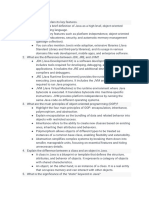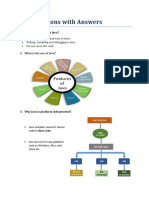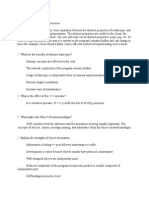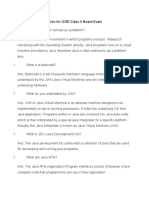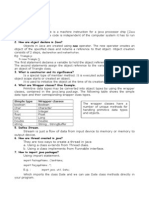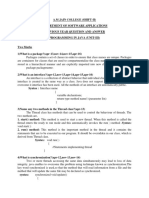0% found this document useful (0 votes)
11 views8 pagesJAVA
The document provides an overview of key programming concepts, focusing on Object Oriented Programming (OOP), Java Development Kit (JDK), operators, data types, classes, member functions, and exception handling. It explains the principles of OOP, the tools in JDK, and various programming constructs like loops, inheritance, and arrays. Additionally, it covers the applet life cycle and the use of control flow statements, enhancing understanding of Java programming.
Uploaded by
lalitsolanki7475Copyright
© © All Rights Reserved
We take content rights seriously. If you suspect this is your content, claim it here.
Available Formats
Download as PDF, TXT or read online on Scribd
0% found this document useful (0 votes)
11 views8 pagesJAVA
The document provides an overview of key programming concepts, focusing on Object Oriented Programming (OOP), Java Development Kit (JDK), operators, data types, classes, member functions, and exception handling. It explains the principles of OOP, the tools in JDK, and various programming constructs like loops, inheritance, and arrays. Additionally, it covers the applet life cycle and the use of control flow statements, enhancing understanding of Java programming.
Uploaded by
lalitsolanki7475Copyright
© © All Rights Reserved
We take content rights seriously. If you suspect this is your content, claim it here.
Available Formats
Download as PDF, TXT or read online on Scribd
/ 8








